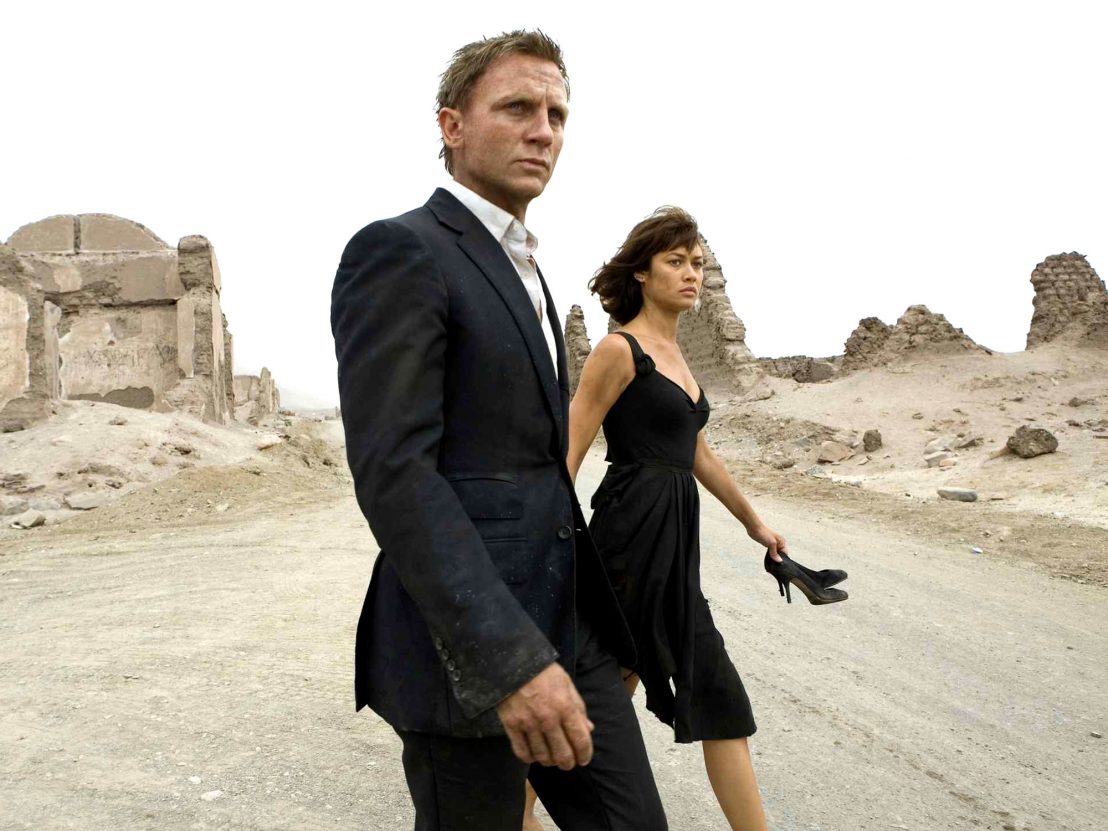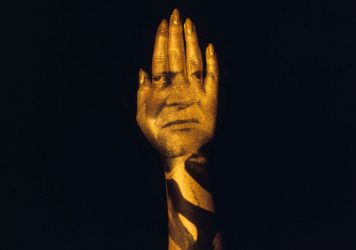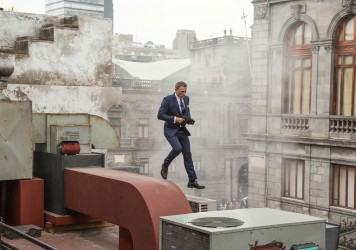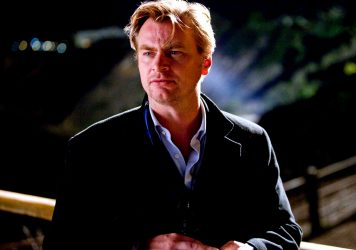
Looking back at Quantum of Solace, it’s clear that it never really stood much of chance. Marc Forster, the journeyman director behind Finding Neverland and Stranger Than Fiction, seemed like an odd choice to helm the 22nd James Bond adventure. The film’s potential was dampened further when production was crippled by the 2007-2008 writers’ strike, forcing Daniel Craig to polish the dialogue himself once shooting had already started. Perhaps unsurprisingly, the final product was met with a less than enthusiastic response. “Don’t ever let this happen again to James Bond,” cried critic Roger Ebert. “What the hell was going on?” asked Roger Moore.
In the years since its release, Quantum of Solace has been unremittingly maligned by Bond fans and non-fans alike, with Rolling Stone, Indiewire and ScreenRant all ranking it among the weaker efforts from the series’ 50-year history. It’s easy to understand why the film faces such derision. Arriving hot on the tails of Casino Royale – arguably the best James Bond film since the 1960s – the film came up against lofty expectations, most of which were quickly dashed. The title, for a start, was a bizarre choice, taken from an Ian Fleming short story which is meaningless in the context of the film. More crucially, the action is disjointed and incomprehensible, the pacing is devoid of all rhyme or rhythm, and the plotting is often incoherent.
Nearly a decade later, and all of these criticisms still stand up. But despite its failings, Quantum of Solace now feels like a bolder film than it is often given credit for, particularly in light of the two most recent entries in the franchise, Skyfall and Spectre. Where these films have largely reverted to type and smothered themselves in homages to older films, Quantum stayed true to the revitalised spirit established in Casino Royale. It was a darker, more realistic Bond which captured the ethos of Fleming’s original novels and placed his hero firmly within post-9/11 sensibilities. Its execution might not have been flawless, but it was its own beast which never drifted towards the tired tropes and sixties nostalgia which have since crept back into the Craig era.
Central to all of this is Daniel Craig’s performance. His interpretation of Bond in Quantum of Solace feels as though torn directly from the pages of Fleming’s novels – a coldly cynical alcoholic with hedonistic tastes and little to live for. Craig is a very different actor to Roger Moore or Pierce Brosnan, and the script recognises this fact. He isn’t forced to deliver awkward double entendres for laughs; rather, he imbues the character with a measure of irony which perfectly complements the tone of the film. It makes for a deeper and more rounded portrayal of 007, phrasing him as an actual character rather than a fantastical caricature.
In this way, Quantum of Solace was wholly unapologetic about doubling down on the harder trajectory that had been promised when the series rebooted itself with Casino Royale. There was no attempt to fall back on the quips and gadgets which plagued the Brosnan years. After the CGI-infused car crash of Die Another Day, it felt like audiences were finally ready for a 007 who bleeds when he’s hurt and doesn’t always look fresh out of a salon.
It’s difficult to escape the feeling that the Bond films have lost their nerve since then, an impression which becomes palpable when contrasting two similar sequences from Quantum of Solace and Spectre. Following a brutal fight scene in the former, Bond is forced to improvise a bandage for his slashed bicep, grimacing as he stems the bleeding. It’s a subtle moment which hammers home the vulnerability beneath Bond’s fearsome exterior. Compare this with the aftermath of a similarly brutal fisticuffs in Spectre, in which Bond is nearly killed by Dave Bautista’s Mr Hinx. Within moments of defeating his opponent, Bond begins making passionate love to his female companion, his face and body apparently unscarred – a minor difference which nevertheless underscores a declining sense of danger and proper consequence in more recent Bond films.
Quantum’s down-to-earth atmosphere wasn’t only found in the film’s greater brutality, but the central plot also tried to root itself more thoroughly within the real world. The storyline finds Bond in a politically unstable Bolivia as he unearths a conspiracy to control and extort the country’s water supply. It’s a believable proposition which plays on contemporary concerns around the environment and Western interference in the developing world. The perpetrators of the scheme, members of the mysterious Quantum organisation, were a logical update of the apolitical SPECTRE villains with whom Bond had done battle during the 1960s. This was not an entirely creative decision – the Bond producers only won the rights to use SPECTRE and its leader, Blofeld, in November 2013 – but nevertheless suggests a franchise willing to adapt itself to a changing world.
The fact that subsequent films have dropped all mention of Quantum in favour of a straight revival of SPECTRE only speaks to their creative timidity. Rather than expand and explore this new collection of enemies, they have simply resurfaced the hallowed ground of Cold War-era Bond, without care for the context in which those classic stories existed. Worse, abandoning the concept of Quantum was an implicit acknowledgment that any new ideas they had were never going to be as good as the stuff they already used decades ago.
The general lack of nostalgia in Quantum of Solace is perhaps its greatest success, an impression which has only become obvious with the subsequent direction of the franchise. More recent efforts have littered themselves with references to previous films and characters, including the return of Q, Moneypenny, Blofeld, SPECTRE, and an inexplicably gadget-laden Aston Martin DB5. With Quantum, all of these elements are refreshingly absent, yet the film is able to retain a clear understanding of the iconic Bond character. A wonderful example is a scene in which Bond demands to be relocated to a higher-class hotel, despite his cover story of being a lowly teacher on sabbatical: “We have just won the lottery”, he explains to the concierge. This one moment of Bondian cool is more effective than any of the derivative fan service found in more recent films.
Admittedly, the larger-than-life cliches of Bond’s world are part of the reason why the franchise is so enduring, but they have too often become substitute for genuinely original ideas, leaving much of the Craig era bereft of its own iconography. It’s not just Bond which has been guilty of this – in today’s age of sequel fever and expanded cinematic universes, there’s been a scourge of mass-market nostalgia across modern blockbuster filmmaking, from Star Wars to Jurassic World. Despite its technical inadequacy, Quantum of Solace understood that a self-aware wink to the audience is no surrogate for proper substance, and thus made a brave effort to sketch out a new direction in which to take Craig’s Bond.
Quantum of Solace may lack the polish of Daniel Craig’s other Bonds – you can see what’s going on in them, for a start – but anyone who proclaims it to be the “worst Bond film ever” needs to rewatch Diamonds Are Forever and have a serious word with themselves. Crucially, the team behind the Bond franchise appear to have learned the wrong lessons when responding to Quantum’s lukewarm reception. It was a film which was wounded, almost fatally, by unfortunate circumstance and a director ill-equipped to handle action set pieces on such a large scale. Nevertheless, its foundation was a solid one, with myriad potential for future development. As Craig prepares to don the iconic dinner jacket for a fifth and final time in 2019, he could do worse than take inspiration from his infamous second outing.
Published 20 Aug 2017

From Dr No to Skyfall, Bekzhan Sarsenbay explores the trends and motifs of a movie institution.

How come there are no people in the world of this new James Bond movie?

By Amy Bowker
The Dunkirk director is rumoured to be next in line to helm the 007 franchise.